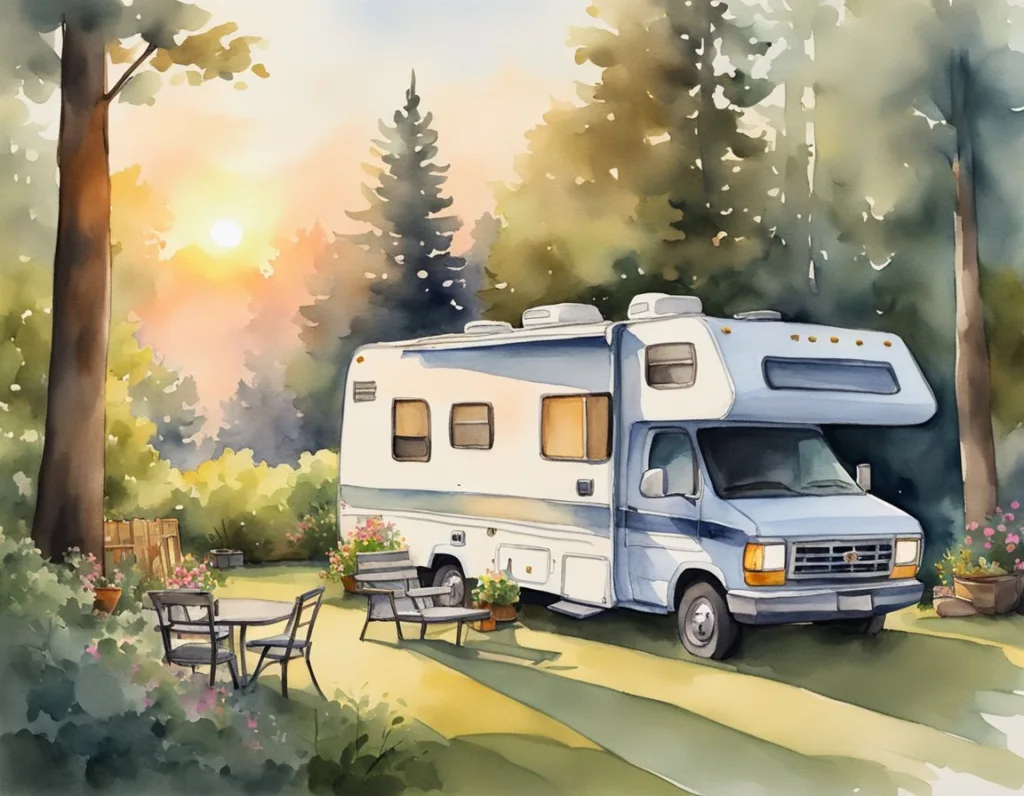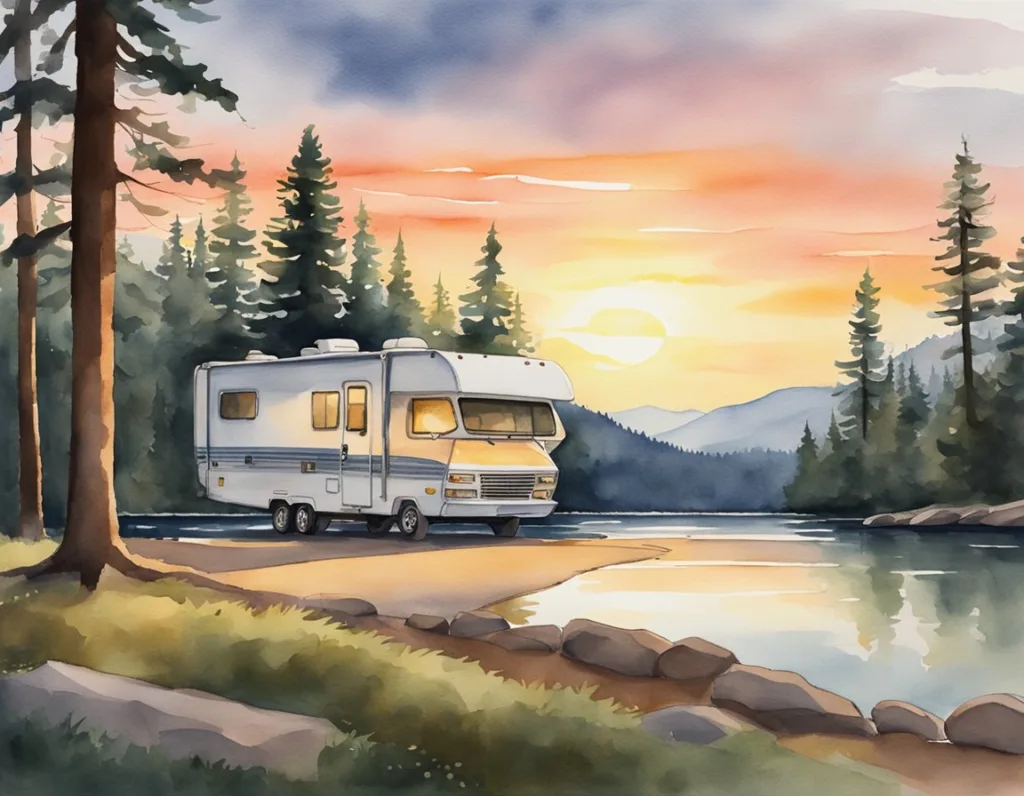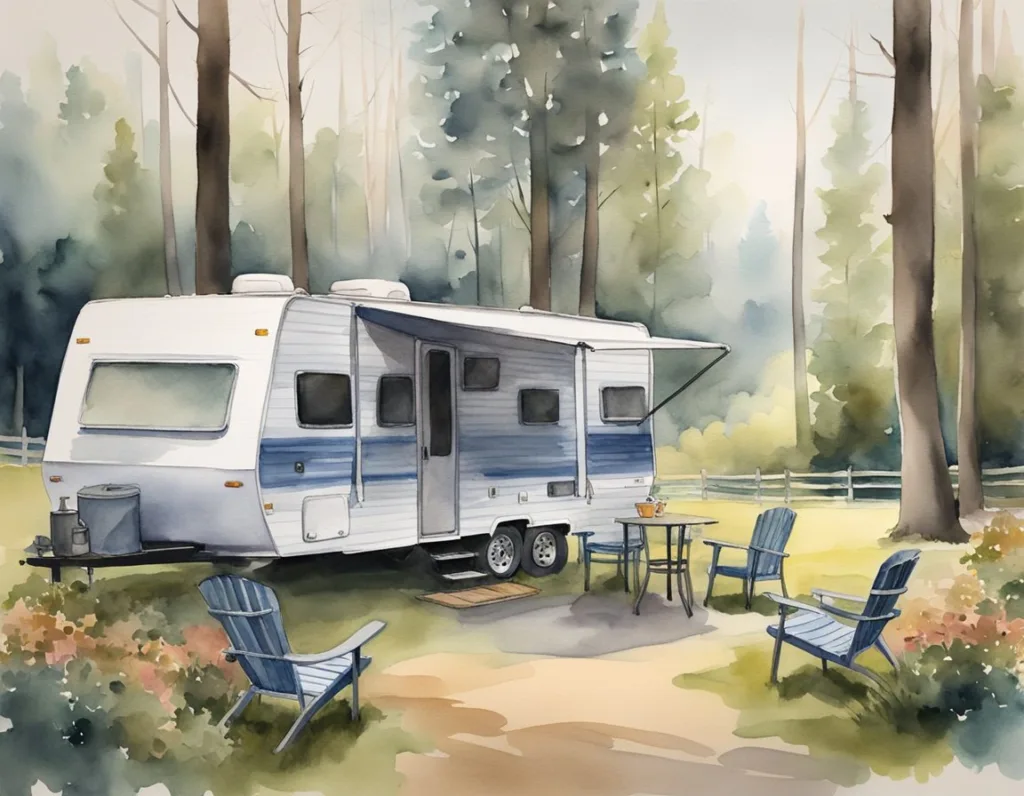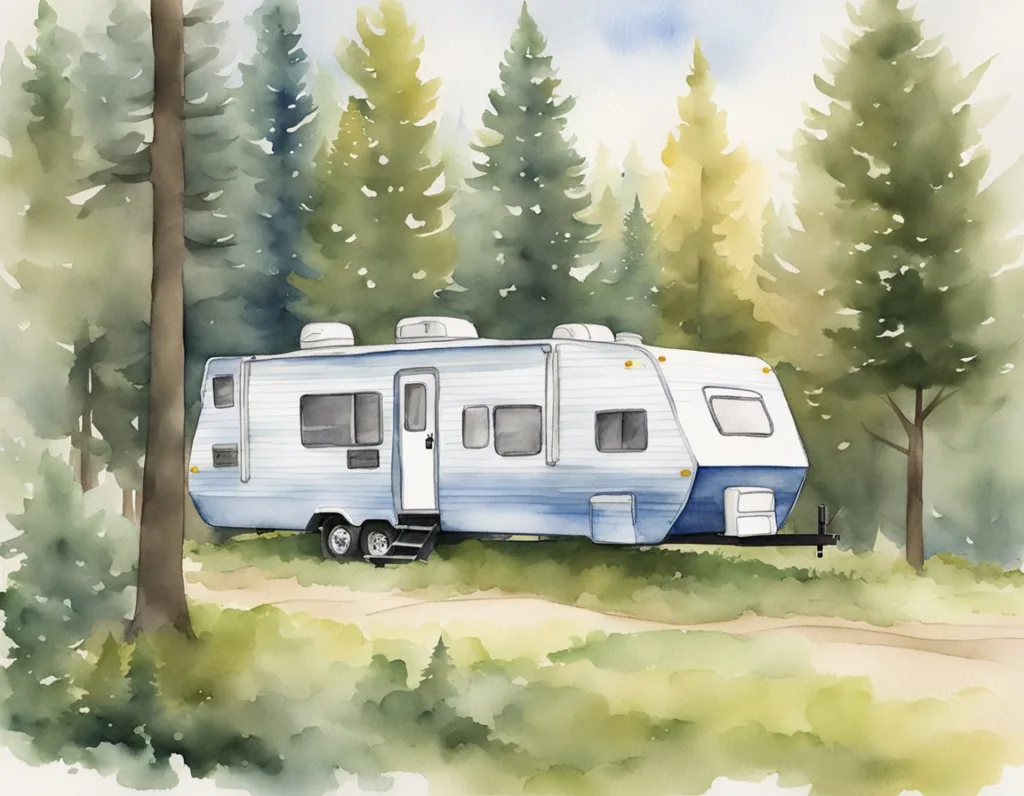If you’re looking for a unique and affordable way to live, stationary RV living might be the answer. This lifestyle involves living full-time in an RV that is parked in a stationary location, such as an RV park or a piece of land that you own. While some people choose the RV lifestyle as a way to travel and see the country, many others choose it as a way to downsize and simplify their lives.

One of the biggest benefits of full-time stationary RV living is the cost savings. Compared to traditional homeownership, the cost of purchasing and maintaining an RV is significantly lower. Additionally, many RV parks offer affordable monthly rates that include utilities and other amenities. This can be especially appealing for retirees or those on a fixed income looking to stretch their budget. Plus, living in a smaller space can also lead to a simpler and more minimalist lifestyle, which can be liberating for some people.
However, stationary RV living is not without its challenges. Living in a smaller space can require some adjustments, and there may be limitations on the amount of possessions you can keep. Additionally, you may need to be prepared for the realities of living in an RV park, such as noise from neighbors or limited privacy. RVs are not well-insulated and so living in a hot or cold climate can make it challenging to keep your environment comfortable. Despite these challenges, many people find that stationary RV living offers a unique and fulfilling lifestyle that is worth the trade-offs.
Choosing the Right RV for Stationary Living

When it comes to stationary RV living, choosing the right RV is crucial. You will want to consider factors such as the type of RV, size, and amenities. Here are some things to keep in mind when selecting an RV for stationary living.
Types of RVs
There are several types of RVs to choose from, including motorhomes, travel trailers, and fifth wheels. Motorhomes are self-contained and come in Class A, B, and C varieties. Travel trailers are towable and come in a range of sizes and styles. Fifth wheels are also towable and are designed to be attached to a pickup truck.
When selecting an RV for stationary living, you will want to consider the type of RV that best suits your needs. Motorhomes are sometimes an issue due to the fact you have a lot of space dedicated to the driver and passenger seats in the cab, which are not necessarily useful to those who are living stationary. Travel trailers and fifth wheels can offer more space and flexibility. Park model or destination trailers can give you even more space, multiple bathrooms, sleeping lofts, and more, depending on the model.
Considerations for RV Size and Amenities
When selecting an RV for stationary living, size and amenities are important considerations. You will want to choose an RV that is large enough to accommodate your needs, but not so large that it is too big for your vehicle to haul, or too big for the potential space you want to rent.
In terms of amenities, you will want to consider things like kitchen appliances, bathroom layout, and storage space. Some RVs come equipped with full kitchens and bathrooms, while others have more basic amenities.
When selecting an RV for stationary living, it’s important to keep in mind that you will be living in a confined space. You will want to choose an RV that is comfortable and functional, but also practical and easy to maintain.
Setting Up Your Stationary RV
When it comes to stationary RV living, selecting the right location is crucial. You have a few options, including RV parks and mobile home parks or private land. RV parks are typically more expensive and may not have weekly or monthly rates but offer more amenities, while mobile home parks will usually be only available by the month. If you are considering parking on private property, you’ll need to investigate the local ordinances and county codes to see if you are allowed to park an RV on the property. Some locations will allow an RV as an ADU, some will not allow it at all, and other locations won’t care.

Setting Up the RV
Once you have selected your location, it’s time to set up your RV. If you have chosen private property, what utilities are in place? You might need a sewer or septic connection, water, and electric. Be sure the electric connection is correct for your RV, a 30 or 50 amp dedicated connection.
When a location doesn’t have a sewage connection, check with local port-a-potty businesses to see if anyone has a “honey wagon” that will come and pump out your tanks on a schedule.
With some RV and mobile home parks, you’ll have access to park showers and toilets which will save wear and tear on your RV’s bathroom. With private property, you may have access to a bathroom in the main house, or you might be using your own RV bathroom daily.
Utility Connections and Maintenance
Maintaining your RV’s utilities is essential for successful stationary living. Regularly check your electric, water, and sewer connections for any signs of damage or wear. If you notice any issues, contact a mobile RV professional to make the necessary repairs.
Weatherproofing and Insulation
Weatherproofing and insulation are critical for stationary RV living, especially in extreme temperatures. Adding some exterior insulation helps keep your RV warm in the winter and cool in the summer, while weatherproofing prevents drafts and leaks. RV roofs need resealing in order to keep out water. Consider investing in skirting to help insulate your RV’s underbelly.
Living Comfortably in a Stationary RV

Living in a stationary RV can be an excellent way to downsize and simplify your life. With careful planning and organization, you can make the most of your smaller living space and enjoy all the amenities you need for a comfortable lifestyle. Here are some tips to help you live comfortably in a stationary RV.
Maximizing Space and Storage
One of the biggest challenges of living in an RV is finding enough space for all your belongings. To maximize your storage space, consider investing in some space-saving solutions such as collapsible storage containers, hanging organizers, and under-bed storage boxes. You can also use vertical space by installing shelves and hooks on walls and doors. Depending on your site, you may be able to have a storage shed to keep larger or less frequently used items.
Managing Temperature and Air Quality
Extreme weather conditions can make living in an RV uncomfortable. To manage temperature and air quality, consider investing in a space heater for colder months and a dehumidifier for humid climates. A dehumidifier is essential in the winter even in a dry climate due to condensation from sleeping, cooking, and bathing. Some RVs won’t have enough amperage for a space heater to be used safely. Proper ventilation is also essential for maintaining good air quality, so make sure to open vents and use fans when necessary.
Access to Internet and Mail
In today’s world, access to the internet is essential. Many RV parks offer Wi-Fi, but if you need a more reliable connection, consider investing in a mobile hotspot. There’s also the option of Starlink, which is what we use. It’s fast and reliable as long as the dish has a good, clear view of the sky. You can have your mail forwarded to a local post office or use a mail forwarding service to receive your mail if you do not want to receive it at your site. Propane tanks are also a necessity for most RVs, so make sure to keep them filled and in good condition. You can also get a large tank and have a propane service come out on a schedule to keep the tank filled.
Costs and Budgeting for Stationary RV Life

Living in an RV can be an affordable way to live, but it’s important to understand the costs associated with stationary RV living. By budgeting and making smart choices, you can make the most of your stationary RV lifestyle.
Understanding Living Expenses
When living in an RV, your living expenses will be different from those of a traditional home. Some expenses you can expect include:
- Rent: If you’re living in an RV park or on private land, you may have to pay rent.
- Utilities: You’ll need to pay for electricity, water, and possibly sewage. Some parks include some or all utilities in the monthly space rent.
- Internet and cell phone: You’ll need to pay for internet and cell phone service if you want to stay connected.
- Propane: If you use propane for cooking or heating, you’ll need to budget for it.
- Maintenance: RVs require maintenance just like any other vehicle, so you’ll need to budget for repairs and upkeep. You may need to find a local mobile RV technician to help with repairs if it’s too far from a dealer or other repair site. It can be difficult to move a large RV when it’s settled into its site.
- RV loan: If you had to borrow money to afford your RV, you may have loan payments each month.
Budget-Friendly Tips and Upgrades
To make the most of your stationary RV lifestyle, consider these budget-friendly tips and upgrades:
- Solar panels: Installing solar panels can help you save money on electricity and reduce your carbon footprint.
- Fuel: If you move your RV more than once a year, fuel costs can add up. Consider staying in one place for longer periods of time to save on fuel.
- Cost of living: Consider living in areas with a lower cost of living to save money on rent and other expenses.
- Budgeting: Make a budget and stick to it. Track your expenses and adjust your budget as needed.
- Upgrades: Consider making upgrades to your RV that will save you money in the long run, such as LED lighting.
- Buy a used RV in good condition rather than a new one to save up front money.
Frequently Asked Questions

What are the pros and cons of living in a stationary RV?
Living in a stationary RV can offer several benefits, such as lower living costs, flexibility to move, and a simpler lifestyle. However, it also has some downsides, such as limited space, maintenance requirements, and potential zoning restrictions. It’s important to weigh the pros and cons before deciding if stationary RV living is right for you.
How does the cost of stationary RV living compare to traditional homeownership?
The cost of stationary RV living can vary depending on factors such as location, amenities, and size of the RV. However, in general, it can be more affordable than traditional homeownership due to lower maintenance and utility costs. It’s important to factor in the cost of an RV and any necessary upgrades or repairs when comparing the two options.
What are the essential items needed for comfortable stationary RV living?
Some essential items for comfortable stationary RV living include a reliable water source, proper sewage disposal, reliable electricity, and adequate heating and cooling. Other items such as furniture, kitchen appliances, and bedding will depend on personal preference and the size of the RV.
What should one look for when choosing an RV park for long-term residency?
When choosing an RV park for long-term residency, it’s important to consider factors such as location, amenities, cost, and community atmosphere. Look for parks with reliable utilities, laundry facilities, and recreational activities. It’s also important to research the park’s policies regarding long-term residency and any potential restrictions. Consider mobile home parks, as well, as they can be an affordable option and many of them allow more RVs than they did in the past.
How do you establish a permanent residence while living in a stationary RV?
Establishing a permanent residence while living in a stationary RV can be done by obtaining a physical address through a mail forwarding service or a friend or family member’s address. It’s also important to register your RV with the DMV and obtain insurance.
Can you legally live in an RV full-time, and what are the implications?
The legality of living in an RV full-time can vary depending on state and local laws. Some areas may have zoning restrictions or require permits for long-term residency. It’s important to research and comply with any applicable laws and regulations to avoid potential legal issues.

